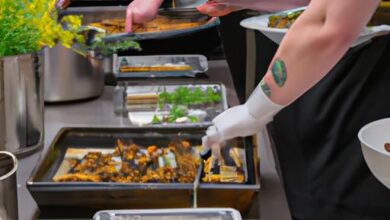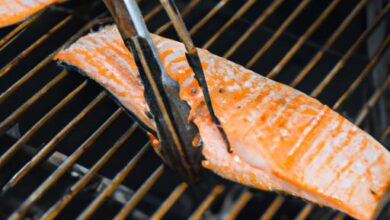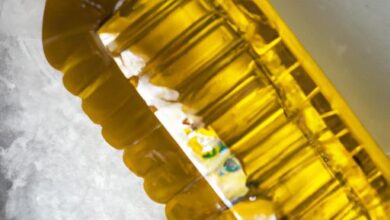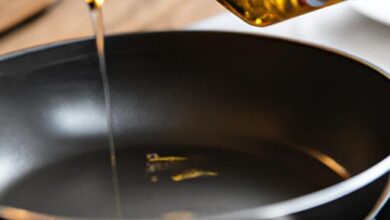Will Cooking Kill Listeria? Exploring the Importance of Proper Cooking Techniques

If you’ve ever wondered whether cooking can effectively eliminate the risk of Listeria contamination, you’re not alone. Listeria, a harmful bacterium, poses a serious threat to our health. But fear not, as I delve into this topic, I’ll shed light on the effectiveness of cooking techniques in eradicating Listeria and the crucial role they play in ensuring our safety.
A. Understanding the Threat of Listeria Contamination
Listeria monocytogenes, commonly referred to as Listeria, is a bacterium that can be found in various environmental sources, including soil, water, and even some animals. It has the ability to survive and thrive in both hot and cold temperatures, making it a formidable adversary in the kitchen.
Listeria contamination can lead to a severe illness called listeriosis, which primarily affects individuals with weakened immune systems, pregnant women, newborns, and the elderly. The symptoms may range from mild, flu-like symptoms to more severe complications such as meningitis and bloodstream infections.
B. Importance of Proper Cooking Techniques
Now, here’s where proper cooking techniques come into play. Cooking food thoroughly can significantly reduce the risk of Listeria infection. Heat is a powerful weapon against this bacterium, as it has the ability to destroy it and render it harmless. However, it’s essential to understand the intricacies of cooking temperatures and duration required to effectively kill Listeria.
As we move forward, we’ll explore the efficacy of cooking in eliminating Listeria and discuss the recommended cooking temperatures to ensure its complete eradication. So, let’s dive deeper into the science behind cooking and its impact on Listeria survival.
Stay tuned for the following sections, where we’ll uncover the truth about whether cooking can indeed kill Listeria and unveil the best cooking practices to keep this dangerous bacterium at bay.
Proceed to Section II: What is Listeria?
What is Listeria?
A. Brief Overview of Listeria Bacteria
Before we delve deeper into the potential risks and impact of Listeria infection, let’s first gain a basic understanding of this bacterium. Listeria monocytogenes is a gram-positive, rod-shaped bacterium that is widely distributed in the environment. It can be found in soil, water, and even some animals, making it quite versatile and adaptable.
One of the remarkable characteristics of Listeria is its ability to survive and thrive in various temperature conditions, including cold environments like refrigerators. This resilience poses a significant challenge in preventing its contamination, as it can persist even under adverse conditions.
B. Potential Health Risks Associated with Listeria Infection
Now that we have a general understanding of Listeria, it’s crucial to recognize the potential health risks it poses. Listeriosis, the illness caused by Listeria infection, can have severe consequences, particularly for vulnerable individuals.
Pregnant women are at an increased risk of contracting Listeria, as their immune systems undergo changes that make them more susceptible to infections. Listeriosis during pregnancy can lead to miscarriage, stillbirth, premature delivery, or severe illness in newborns.
Individuals with weakened immune systems, such as those with HIV/AIDS, cancer, diabetes, or undergoing immunosuppressive therapy, are also more vulnerable to Listeria infection. The elderly population, whose immune systems may be compromised due to age-related factors, are at a heightened risk as well.
Listeriosis symptoms can range from mild, flu-like symptoms to more severe manifestations, such as high fever, severe headache, stiffness, nausea, and even confusion. In severe cases, it can progress to more life-threatening conditions like meningitis and bloodstream infections.
By understanding the potential health risks associated with Listeria infection, we can better appreciate the importance of taking necessary precautions in the kitchen. In the following sections, we will explore whether cooking can effectively kill Listeria and discuss best practices to minimize the risk of contamination.
Proceed to Section III: Does cooking kill Listeria?
Does Cooking Kill Listeria?
A. Exploring the Effectiveness of Cooking in Killing Listeria
Now comes the burning question: Can cooking truly kill Listeria? The answer is a resounding yes, but with a caveat. Cooking does indeed have the power to eliminate Listeria bacteria and make our food safe for consumption. However, it’s crucial to ensure that the cooking process is carried out correctly to effectively eradicate this harmful bacterium.
When food is cooked at high temperatures, it causes the Listeria bacteria to undergo thermal destruction. This means that the heat breaks down the bacterium’s structure and renders it unable to cause harm. So, whether you’re grilling, baking, boiling, or frying your food, as long as it reaches the appropriate temperatures, you can rest assured that you’re reducing the risk of Listeria contamination.
B. Recommended Cooking Temperatures to Eliminate Listeria
To ensure that Listeria is completely eliminated during the cooking process, it’s important to adhere to recommended cooking temperatures. The United States Department of Agriculture (USDA) advises the following guidelines for cooking various types of food:
-
Poultry: Cook all poultry products, including ground chicken and turkey, to an internal temperature of 165°F (74°C). This ensures that any potential Listeria bacteria present in the meat are destroyed.
-
Ground Meat: Ground meats, such as beef, pork, and lamb, should be cooked to a minimum internal temperature of 160°F (71°C). This applies to dishes like burgers and meatloaf, where the meat is ground and therefore more susceptible to contamination.
-
Seafood: Fish and shellfish should be cooked until they reach an internal temperature of 145°F (63°C) or until the flesh becomes opaque and flakes easily with a fork.
By following these recommended cooking temperatures, you can significantly reduce the risk of Listeria contamination and enjoy your meals without worry.
Stay tuned for the upcoming sections, where we’ll uncover the factors influencing Listeria survival during cooking and discuss the best cooking practices to prevent Listeria contamination.
Proceed to Section IV: Factors Influencing Listeria Survival During Cooking
Factors Influencing Listeria Survival During Cooking
When it comes to cooking, various factors come into play that can influence the survival of Listeria bacteria. Understanding these factors is crucial in ensuring effective Listeria control. Let’s delve into the key elements that impact Listeria viability during the cooking process.
A. Impact of Cooking Methods on Listeria Viability
Different cooking methods can have varying effects on the viability of Listeria bacteria. While some methods are highly effective in killing Listeria, others may not be as reliable. For instance, boiling, steaming, and grilling at high temperatures are known to be more effective in eliminating Listeria compared to methods like microwaving or sous vide cooking.
The heat generated during boiling or steaming can penetrate the food thoroughly, ensuring that Listeria is exposed to the necessary temperatures for destruction. On the other hand, microwaving or sous vide cooking may not always provide consistent heat distribution, potentially leaving pockets of food where Listeria can survive.
B. Temperature and Duration Considerations for Effective Listeria Control
Cooking temperature and duration are critical factors in ensuring effective Listeria control. Listeria bacteria are most vulnerable to high temperatures, and a minimum internal temperature must be reached to kill them.
The U.S. Department of Agriculture (USDA) recommends cooking poultry, including ground chicken and turkey, to an internal temperature of 165°F (74°C). For other meats such as beef, pork, veal, and lamb, the recommended internal temperature is 145°F (63°C) with a three-minute rest time.
It’s important to note that relying solely on color change or texture of food as an indicator of doneness may not be sufficient to ensure Listeria control. Using a food thermometer to measure internal temperatures accurately is essential to verify that the desired temperature has been reached and that Listeria has been effectively eliminated.
Stay tuned for the next section, where we’ll explore the best cooking practices to prevent Listeria contamination and ensure your safety.
Proceed to Section V: Best Cooking Practices to Prevent Listeria Contamination
Best Cooking Practices to Prevent Listeria Contamination
When it comes to safeguarding ourselves against Listeria contamination, adopting the best cooking practices is paramount. By following these guidelines, we can minimize the risk and ensure the safety of our meals. Let’s explore two crucial aspects: the proper handling and storage of raw ingredients, and cooking techniques that help minimize Listeria risks.
A. Proper Handling and Storage of Raw Ingredients
It all starts with the ingredients we bring into our kitchens. To prevent Listeria contamination, it’s essential to handle and store raw ingredients with care. Here are some key practices to keep in mind:
-
Choose fresh and reputable sources: Opt for fresh, high-quality ingredients from trusted suppliers. This reduces the likelihood of contamination at the source.
-
Practice good hygiene: Wash your hands thoroughly before and after handling raw ingredients. This simple step helps prevent the transfer of bacteria to the food.
-
Separate raw and cooked foods: Keep raw meats, poultry, and seafood separate from ready-to-eat foods like fruits and vegetables, as cross-contamination can occur.
-
Refrigerate promptly: Refrigerate perishable ingredients, especially those prone to Listeria growth, such as deli meats and soft cheeses. Aim to refrigerate within two hours of purchase or preparation.
B. Cooking Techniques to Minimize Listeria Risks
While proper handling and storage are crucial, cooking techniques themselves play a significant role in reducing Listeria risks. Here are some techniques to consider:
-
Cook thoroughly: Ensure that all meats, poultry, seafood, and eggs are cooked to their appropriate internal temperatures. Use a food thermometer to verify that the food has reached the recommended safe temperatures.
-
Avoid consuming undercooked dishes: Steer clear of dishes that contain raw or undercooked ingredients, such as sushi, tartare, or foods prepared with unpasteurized eggs. These dishes may pose a higher risk of Listeria contamination.
-
Maintain hot holding temperatures: If you’re keeping cooked dishes warm for a period, ensure they are held at a minimum temperature of 140°F (60°C) to prevent Listeria growth.
By incorporating these practices into your cooking routine, you can significantly reduce the risk of Listeria contamination and safeguard the health of yourself and your loved ones.
Proceed to Section VI: Conclusion
Conclusion
In conclusion, the question of whether cooking can effectively kill Listeria has been thoroughly explored. We have learned that cooking plays a crucial role in ensuring food safety and minimizing the risk of Listeria contamination. By understanding the threat of Listeria and the importance of proper cooking techniques, we can take proactive measures to protect ourselves and our loved ones.
Throughout this article, we have discovered that cooking food thoroughly at recommended temperatures can effectively eliminate Listeria and reduce the chances of listeriosis. It is essential to handle and store raw ingredients properly and employ cooking methods that minimize Listeria risks. By following these best practices, we can enjoy our meals without worrying about the potential dangers of Listeria.
Remember, the battle against Listeria is not just in the kitchen. It also involves practicing good hygiene, maintaining a clean cooking environment, and ensuring the integrity of the ingredients we use. By adopting a holistic approach to food safety, we can further minimize the risk of Listeria contamination.
In conclusion, cooking does have the power to kill Listeria, but only when done correctly and with proper attention to detail. So, the next time you step into the kitchen, remember the importance of cooking techniques in safeguarding against Listeria and creating a healthy and secure dining experience.
Thank you for joining me on this insightful journey into the world of Listeria and cooking. Stay safe, stay informed, and happy cooking!
Conclusion: So above is the Will Cooking Kill Listeria? Exploring the Importance of Proper Cooking Techniques article. Hopefully with this article you can help you in life, always follow and read our good articles on the website: cook.mahjong-gratuit.net




